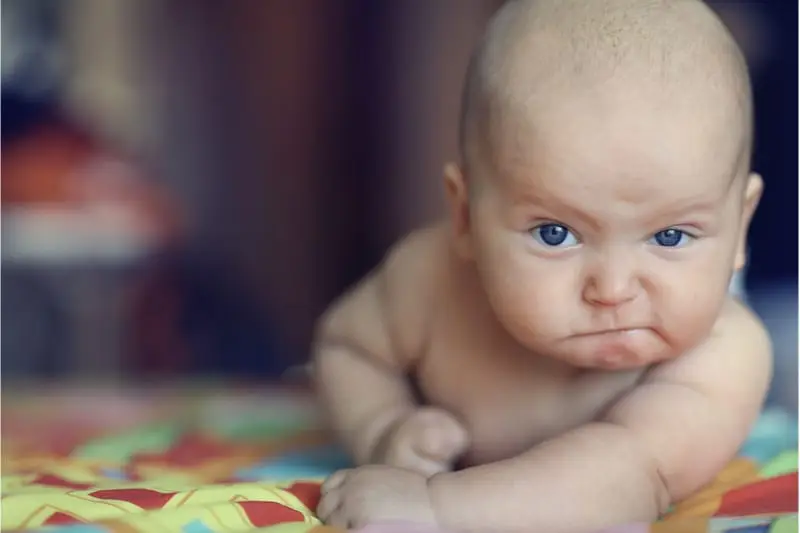Anyone who has been around kids before knows how unique their temperaments can be. From toddlers all the way to teens, some are quiet and others are social butterflies. Others, yet, can be a bit more rambunctious or even disagreeable. These unique personalities shape children into the people they become as adults. So is it possible to rid our children of anger issues before they become real adolescent anger management problems?
Thankfully, the answer is yes!
Getting to the bottom of adolescents and anger
75% of parents think their children suffer if both parents work full time. Now, obviously for most of us, this is not by choice. People have to work to support their children. But how often do we really think about the daily functions of life and how they effect us or our children?
Before we can help our kids, we have to understand our kids. After all, we all know, oh so well, how awkward those formative years can be.
To top off the already bumpy ride, they now have social media layered on top of other existing weirdness. It’s hard enough for adults to handle, so why leave our kids to their own devices?…. Literally.
But today’s post isn’t about social media.
We must find ways to stay in touch with our kids, regardless of our schedules. This is the real goal.
And here are some ways to start.
Activities to Try
The following activities have been developed by the Makin Wellness counselors in Pittsburgh, PA. They can be completed as-is or adapted to meet your own unique situations and age groups!
Recognizing emotions is a must in anger management.
There are many different complex emotions that we feel day to day. It’s not just simply ‘happy’, ‘sad’, ‘mad’, and such. Beneath the surface anger, there’s more to the story. In addition to angry, we might be stressed, frustrated, annoyed, or even embarrassed.

It’s important to teach young ones how to recognize what they’re feeling, so their emotions don’t develop into something larger. So they avoid acting impulsively on their feelings.
Teaching children how to recognize emotions can be easier said than done, but here are some activities to get started:
- First, describe emotions to children. Tell them about the ‘little’ ones … the basics. Mad, sad, happy, tired, and so on. Now, the ‘big’ ones. The more complex ones like frustrated, stressed, gloomy, grief-stricken, and so on.
- Have your kids name times they think they’ve felt the ‘smaller’ emotions. Ask them what they did in those situations.
- Name times they think they’ve felt the big emotions. Ask them what it felt like to go through those emotions and how they acted in those situations.
- Encourage the kids to think about their emotions when they feel things. Get them into the habit of recognizing and talking about how they feel, so they can recognize their emotions easier and learn to stop and think about their emotions before they act. This is genuine, proactive adolescent anger management at its finest.
Although this is designed for younger kids, trying to do these activities on a more age appropriate level with teenagers won’t hurt. Teenagers are confused and emotional. Recognizing these feelings, as silly as it may feel, will help to process and encourage the mind to cope.
Adolescent Anger Management and Buttons?
Certain things have a tendency to set us off and make us feel angry. We like to call these our ‘anger buttons’. They can be things like having to share, being told ‘no’, being made fun of, or even being made to do things we don’t want to.
Sounds like it’s just for kids, right?
It really applies to us all. We are just better equipped to deal with these flighty emotions as adults.
It is important to understand what makes each of us angry as kids, so that we can avoid these situations and learn how to properly act as young and full grown adults.
To help children recognize and understand their anger buttons, try this activity:
- Start by asking the child or children about what things make them angry. If possible, have a piece of paper or a white board handy to write them down so you can refer back to them.
- After the child has listed out these triggers, explain to them that these are their ‘anger buttons’ – the things that make us angry when someone pushes them.
- Explain that, like buttons, they can be pressed accidentally or on purpose, but can be turned off regardless. Then, go through the list with the child and have them list ways the button can be turned off.
Again, these activities are meant for younger children, but can be expressed with the same outcome to teens and young adults, if presented in a manner they feel comfortable with.
Positively Expressing Anger
Not all anger is bad or undue. Not all anger must be bottled up. It is important to teach children how to properly release their anger, in order to prevent behavioral and mood issues in the future. There are a ton of ways anger can be positively expressed, but here are some of the most effective:
- Talking About It. One of the best and most productive ways to deal with anger is by talking it out. Have those tough discussions about who they want to be and how they feel about themselves. Get them into the habit of verbally expressing their emotions to others. Show them there is nothing to be afraid of. Let them feel what its like to get it genuinely off their chest with another they are emotionally bonded to.

- Creative Art. Getting creative is a great way to release emotions and calm down. It allows us to express ourselves indirectly, and often makes it easier for us to recognize and understand what we’re feeling. Ripping paper to create paper mache’ releases energy, from the paper and your mind. Telling stories can help process stresses and problem solving skills. The list is always endless when creativity is involved.
- Playing a Sport Getting active in any way , whether it be through sports, going for a walk, or something different will help the body to release endorphins. These chemicals help us calm down and feel better – all the while taking our minds off whatever made us angry in the first place. Punching bags are an effective way to release tensions while respecting safety.

Listening to Music. Listening to music helps us to get our minds off whatever made us angry, and is sure to put us in a better mood. Even a good sad song can make you happy if you love it enough! Try to find music you all enjoy and can sing together.
Adolescent anger management means thinking before acting.
Often times, when we get angry, we want to do the first thing that comes to mind. More often than not, this involves getting physically violent, getting verbally aggressive, or storming off. Acting impulsively, however, is not a good way to deal with anger. To help children and teenagers learn how to think before they act, try using some of the following techniques:
- Try thinking up situations that make them angry. Revert back to the anger buttons they listed if you’re feeling stuck on ideas. Have them think about and explain what would happen if they acted on their anger in the situation. For example, you might ask ‘how would your teacher react if you start a fight with a classmate?’ or ‘If you hit your sibling when you’re told to share your toy, what would happen?’
- Have them think about things they might repeatedly get in trouble for. Ask them why they keep doing them, and help them come up with alternate ways to act so that they don’t keep getting in trouble.
- Talk to your kids about good outcomes and bad ones. Address punishments and what they mean to you, as well as your child. Have them come up with actions that might warrant good results and ones that would warrant punishments. The idea is to get them into the mindset of acting in ways that have good results – rather than bad ones! And for older kids, this will at the very least remind them of the logic behind it all.
Compromising with your kids. When is it ok?
Often times, when we become angry, it’s very easy to start an argument. Everyone always wants to be right, and we hate admitting when we’re wrong. We dislike giving in to others, and arguments seem to just appear because of it. For this reason, it’s important to remember the benefits of compromise. Try working with children on being flexible by describing situations where compromise is necessary, and let them discover good ways to compromise. For example, ask them how they could compromise instead of arguing. Talk them through it in a logical way, weighing out the benefits and costs.
Try to put yourself in their shoes. Breathe them through hot spots, listen and talk to them! They deserve your attention.
Under it all, that’s all they need…. You.









